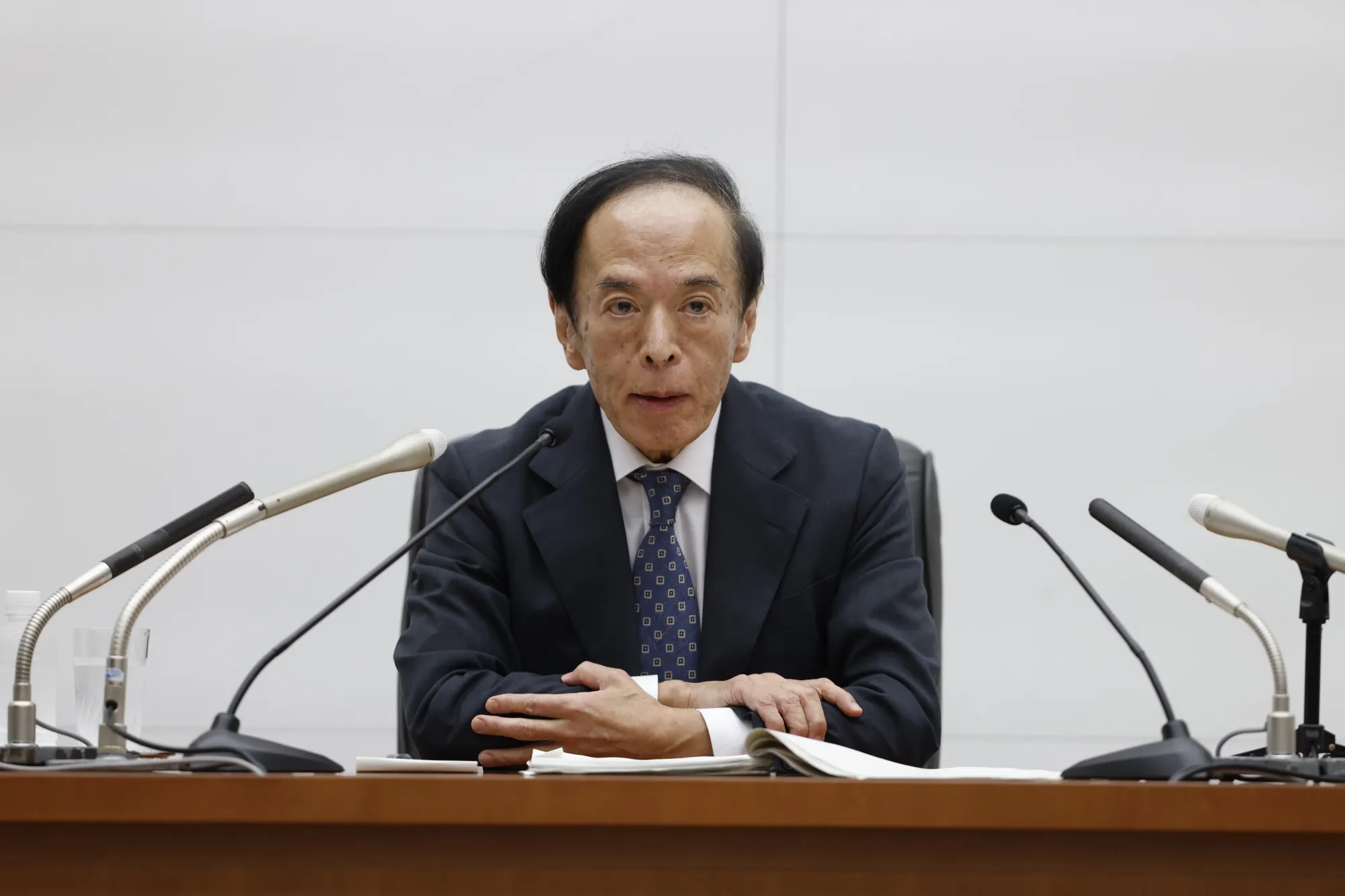Rising Long-Term Yields: Ueda's Concerns And Risk Assessment

Table of Contents
Governor Ueda's Stance on Rising Long-Term Yields
Governor Ueda's approach to the rising long-term yields reflects a delicate balancing act. He's inherited a complex situation shaped by years of yield curve control (YCC) and ultra-loose monetary policy aimed at stimulating inflation. While the BOJ's target inflation rate remains elusive, the recent increase in yields represents a significant deviation from the intended trajectory.
- Ueda's recent speeches and press conferences have emphasized the need for a gradual and carefully managed approach to any adjustments in monetary policy. He has repeatedly stressed the importance of sustaining economic growth while addressing inflationary pressures.
- His commitment to the current monetary policy framework, including YCC, remains steadfast, although he has acknowledged the need for flexibility and adaptability in response to evolving economic conditions.
- Potential adjustments to the yield curve control policy are being carefully considered, with the BOJ likely to opt for subtle modifications rather than an abrupt shift. The focus is on maintaining market stability while gradually allowing for a more natural yield curve.
Economic Risks Associated with Increasing Long-Term Yields
The rise in long-term yields presents several potential risks to the Japanese economy, particularly given Japan's high levels of government debt.
- Increased borrowing costs for businesses and consumers: Higher interest rates make borrowing more expensive, potentially dampening investment and consumer spending. This could stifle economic growth and exacerbate existing economic vulnerabilities.
- Impact on government debt servicing: Japan carries a substantial public debt burden. Rising yields directly increase the cost of servicing this debt, placing further strain on government finances and potentially limiting fiscal flexibility.
- Potential slowdown in economic growth and investment: Higher borrowing costs can discourage businesses from investing in expansion and innovation, leading to slower economic growth and potentially hindering long-term economic prospects.
- Risk of a sudden and sharp increase in yields: A rapid and unexpected surge in yields could trigger market instability, potentially leading to financial disruptions and further economic uncertainty.
Market Reactions and Investor Sentiment
The rising long-term yields have already elicited noticeable market reactions and shifts in investor sentiment.
- Fluctuations in the Japanese yen exchange rate: The upward pressure on yields has led to some volatility in the yen, reflecting changing expectations about future monetary policy and the Japanese economy.
- Changes in Japanese government bond prices: As yields rise, the prices of Japanese government bonds (JGBs) fall, reflecting the inverse relationship between yields and bond prices. This impacts the portfolios of both domestic and international investors.
- Impact on Japanese equity markets: While the impact is complex and multifaceted, higher yields can lead to adjustments in investor allocations, potentially affecting equity market valuations.
- Comparison to global market trends: The changes in Japanese long-term yields must be considered within the context of global market trends and the broader international economic environment.
The Potential for Policy Adjustments
The Bank of Japan faces a difficult decision regarding potential policy adjustments. Several options are on the table, each with potential benefits and drawbacks.
- Gradual adjustments to yield curve control: The BOJ could subtly widen the acceptable range for 10-year JGB yields, allowing for a more gradual upward movement. This would aim to manage market expectations while avoiding abrupt changes.
- Potential tapering of quantitative easing: Reducing the pace of asset purchases could be another tool to gradually normalize monetary policy, albeit a more significant step with greater potential for market disruption.
- The possibility of interest rate hikes: While considered less likely in the near term, outright interest rate hikes remain a possibility if inflationary pressures intensify or if the yen weakens significantly.
- The risks and challenges associated with policy changes: Any adjustment to monetary policy carries inherent risks. The BOJ must carefully calibrate its actions to avoid triggering unwanted market reactions or harming the ongoing economic recovery.
Conclusion
Governor Ueda's concerns regarding rising long-term yields are justified, given the potential risks to the Japanese economy. The upward trend in yields presents a significant challenge, requiring careful management of monetary policy. Market reactions have been varied, reflecting the uncertainty surrounding the future direction of the BOJ's actions. Continued monitoring of the situation is crucial, as the potential for future policy adjustments remains a key factor shaping the Japanese economic outlook. Understanding the evolving dynamics of rising long-term yields and their implications for the Japanese economy is paramount for making informed investment decisions. Stay informed about the evolving situation concerning rising long-term yields and Governor Ueda's responses to navigate the complexities of the Japanese financial market effectively.

Featured Posts
-
 Rubio In Europe Assessing Trumps Foreign Policy Strategy
May 29, 2025
Rubio In Europe Assessing Trumps Foreign Policy Strategy
May 29, 2025 -
 Jawa Tengah 24 April Prakiraan Cuaca Dan Peringatan Dini
May 29, 2025
Jawa Tengah 24 April Prakiraan Cuaca Dan Peringatan Dini
May 29, 2025 -
 Ipa Polisi Stratiotikon Elikopteron Sta Iae 1 4 Dis Dolaria
May 29, 2025
Ipa Polisi Stratiotikon Elikopteron Sta Iae 1 4 Dis Dolaria
May 29, 2025 -
 Covid E Long Covid La Vaccinazione Riduce Il Rischio Del 27
May 29, 2025
Covid E Long Covid La Vaccinazione Riduce Il Rischio Del 27
May 29, 2025 -
 Q Music Viv Mellish Showcases Four Brisbane Women Shaping The Music Industry
May 29, 2025
Q Music Viv Mellish Showcases Four Brisbane Women Shaping The Music Industry
May 29, 2025
Latest Posts
-
 Experience Gorillaz House Of Kong Exhibition At Londons Copper Box Arena
May 30, 2025
Experience Gorillaz House Of Kong Exhibition At Londons Copper Box Arena
May 30, 2025 -
 Gorillaz 25 Years Of Music And Art Celebrated In London
May 30, 2025
Gorillaz 25 Years Of Music And Art Celebrated In London
May 30, 2025 -
 Gorillaz House Of Kong Exhibition Invades Londons Copper Box Arena
May 30, 2025
Gorillaz House Of Kong Exhibition Invades Londons Copper Box Arena
May 30, 2025 -
 Gorillazs 25th Anniversary London Concerts And Retrospective
May 30, 2025
Gorillazs 25th Anniversary London Concerts And Retrospective
May 30, 2025 -
 Gorillaz 25th Anniversary The House Of Kong Exhibition Unveiled
May 30, 2025
Gorillaz 25th Anniversary The House Of Kong Exhibition Unveiled
May 30, 2025
